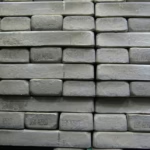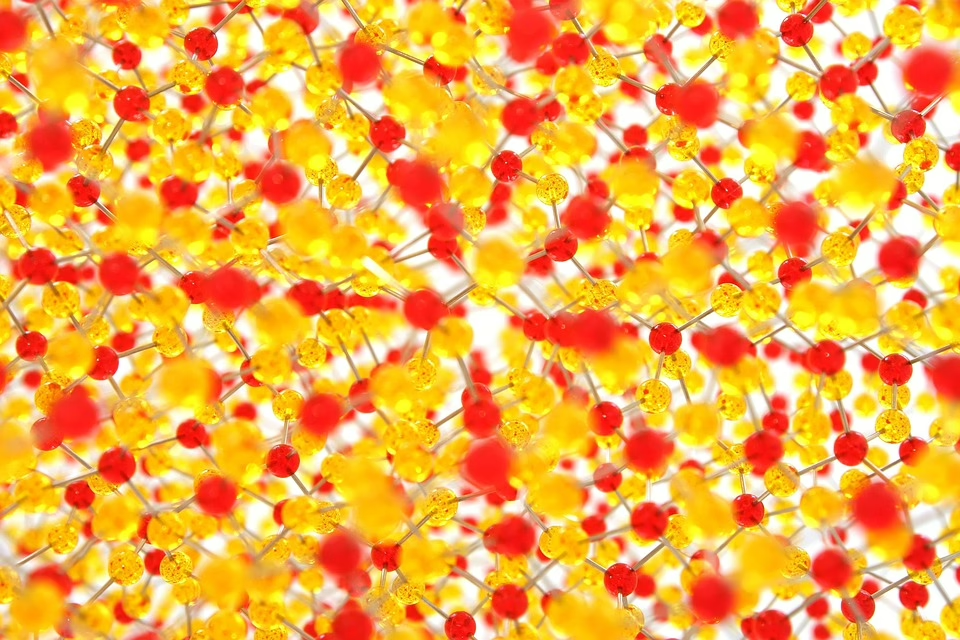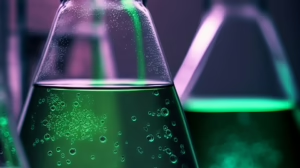From Concepts to Compounds: The Role of Chemistry Templates in Education
Introduction
Chemistry, often considered the central science, intersects with physics, biology, and engineering. As the subject encompasses a vast range of theories, concepts, and practical applications, it presents unique challenges in educational settings. One effective way to bridge the gap between theoretical knowledge and practical skills in chemistry education is through the use of templates. These templates, which are structured tools providing visual representations or frameworks, can significantly improve the way students understand and connect concepts to real-world compounds.
What Are Chemistry Templates?
Chemistry templates are structured guides or frameworks that help students visualize and organize complex information. They can take many forms, including:
- Concept maps: Visual representations that show the relationships between various chemical concepts.
- Workflow charts: Step-by-step guides that outline the procedure for chemical experiments or reactions.
- Molecular models: Physical or digital representations of molecules that help in visualizing structures and shapes.
- Problem-solving frameworks: Templates that guide students through the steps necessary to solve chemistry problems, especially in areas like stoichiometry or thermodynamics.
The utilization of these templates helps students in grasping abstract concepts, making connections, and enhancing retention. In the following sections, we will explore how chemistry templates contribute to learning outcomes in high school and university contexts.
Theoretical Background: Learning Theories in Chemistry Education
In order to understand the effectiveness of chemistry templates, it is essential to examine the underlying theoretical frameworks of learning theory. Two prominent theories that backdrop the rationale for using templates in education are:
-
Constructivism: This theory posits that learners construct their own understanding based on experiences. Through the use of templates, students can build mental models of chemical concepts, facilitating deeper learning. When equipped with templates, learners engage actively, linking their prior knowledge with new information.
-
Cognitive Load Theory: This theory suggests that our working memory has limitations. Chemistry is inherently complex, with numerous interconnected concepts. Templates can reduce cognitive load by organizing information in manageable parts, allowing students to focus on understanding rather than memorization.
Advantages of Using Chemistry Templates
-
Enhanced Visualization
Chemistry often involves abstract concepts, such as molecular structures and reaction mechanisms. Templates allow students to visualize these concepts, making them tangible. For example, drawing a molecular model can help students understand the three-dimensional spatial orientation of atoms. -
Active Learning
Templates promote active learning by requiring students to fill them out or manipulate elements within them. Such engagement encourages deeper cognitive processing compared to passive learning methods. -
Organization of Information
Chemistry involves numerous interconnected topics. Templates can help students organize information, making it easier to synthesize knowledge and apply concepts across different areas of chemistry. -
Facilitation of Collaborative Learning
Templates can be used in group settings, encouraging collaborative dialogue. For instance, teams can work on constructing a concept map that outlines the relationships between various chemical processes. -
Preparation for Real-World Applications
By using templates that mirror professional practices (like lab report templates or safety assessment checklists), students develop skills that will be useful in their future careers.
Types of Chemistry Templates in Education
1. Concept Maps
Concept maps are visual diagrams that represent a set of concepts and the relationships between them. A concept map for organic chemistry might include definitions for functional groups, examples of reactions, and connections between these elements.
Implementation in Classroom
Teachers can introduce concept mapping as an assignment after a unit in organic chemistry. Students can create their own maps and then share them with classmates for discussion. This peer interaction often leads to enriched understanding as students explain their thoughts to one another.
2. Reaction Mechanism Flowcharts
Flowcharts provide step-by-step outlines of chemical reactions. They can detail the reactants, products, and the mechanism that describes how the reaction proceeds.
Practical Application
In laboratory settings, students can employ flowcharts to predict the outcomes of experiments. This preparation allows them to visualize the process and avoid common mistakes, thereby improving their experimental skills.
3. Molecular Model Kits
Molecular model kits make abstract structures tangible, allowing students to build physical representations of molecules.
Benefits in Learning
Using model kits during lectures or lab sessions can deepen understanding of stereochemistry and molecular geometry. Students can manipulate the models to see the effects of bond angles and types, making the learning experience highly interactive.
4. Problem-Solving Templates
Problem-solving templates offer structured approaches to tackle chemistry problems, such as stoichiometric calculations or balance redox equations.
Guiding Students
Instructors can introduce these templates at the beginning of a unit and guide students through their content, lead practice examples, and engage students in collaborative problem solving.
Case Studies: Effective Use of Templates in Chemistry Education
Case Study 1: Concept Maps in Organic Chemistry
A study conducted in a high school chemistry class examined the impact of using concept maps for teaching organic chemistry. Students who used concept maps demonstrated improved performance on assessments related to organic concepts compared to those who did not use these tools. Interviews with students revealed that they appreciated the ability to visualize complex relationships.
Case Study 2: Molecular Modeling in University Labs
At a university level, a chemistry curriculum incorporated molecular model kits in its labs. Evaluations showed that students using model kits were able to better predict the outcomes of reactions and comprehend molecular interactions compared to those who only used textbook images. Feedback indicated that hands-on experience with models significantly enhanced their understanding of three-dimensional shapes.
Implementing Chemistry Templates: Best Practices
1. Align with Learning Objectives
Before introducing templates, educators should ensure that they align with learning objectives. Each template should address key concepts necessary for mastering the subject material.
2. Foster Student Autonomy
While templates serve as guides, students should be encouraged to adapt them to better suit their learning styles. This approach promotes autonomy and personalization, making the learning experience more relevant.
3. Offer Guidance and Feedback
Provide students with instruction on how to use templates effectively. Offer constructive feedback as they utilize these tools to reinforce understanding and correct misconceptions.
4. Incorporate Technology
Digital tools can enhance the effectiveness of templates. Using software to create interactive concept maps or simulations of molecular structures can further engage students.
5. Evaluate Effectiveness
Regularly assess the impact of templates on student learning through surveys, quizzes, and examinations. This evaluation can help refine the use of templates to maximize their effectiveness.
Challenges in Implementing Chemistry Templates
Despite the myriad benefits, implementing chemistry templates is not without challenges.
1. Resistance to Change
Some educators may resist altering traditional teaching methods. They may need encouragement and support to implement new strategies effectively.
2. Training and Professional Development
Educators may require training on how to create and use templates effectively. Professional development workshops can be beneficial in addressing this gap.
3. Variability in Student Engagement
Not all students may find templates equally useful. Therefore, multiple types of templates should be employed to accommodate different learning preferences.
Future Directions: Research and Development
As educational methodologies continue to evolve, further research is needed to assess the long-term impact of chemistry templates on learning outcomes across diverse educational settings. Areas of interest include:
- The effects of digital versus physical templates on student engagement and understanding.
- Longitudinal studies tracking the impact of templates on students’ ability to retain knowledge over time.
- Investigating the impact of templates on students’ attitudes toward chemistry as a discipline.
Conclusion
The use of chemistry templates represents a powerful pedagogical tool in education. By facilitating visualization, promoting active learning, organizing complex information, and preparing students for real-world applications, these templates enhance the learning experience for students in chemistry.
As educators strive to engage and inspire the next generation of scientists, integrating templates into the curriculum can bridge the gap between concepts and compounds, enabling students to find meaning in the intricate world of chemistry. As research continues to unveil the effectiveness of these tools, they will undoubtedly play an indispensable role in the evolving landscape of chemistry education.
Modern Footnote Sources
- Bransford, J.D., Brown, A.L., & Cocking, R.R. (2000). How People Learn: Brain, Mind, Experience, and School. National Academies Press.
- Sweller, J. (1988). Cognitive load during problem solving: Effects on learning. Cognitive Science, 12(2), 257-285.
- Novak, J.D., & Cañas, A.J. (2006). Theoretical and practical aspects of concept maps. Proceedings of the First International Conference on Concept Mapping.
- Stevens, R., & McKeachie, W.J. (2010). Teaching tips: Strategies, research, and theory for college and university teachers. Cengage Learning.
- Gabel, D.L. (1998). Improving teaching and learning in chemistry. Journal of Chemical Education, 75(5), 548.
- Herron, J.D. (1996). Constructing a model of the observable universe. The Physics Teacher, 34(4), 210-215.
- Lewis, J.E., & Wood, R. (2005). The role of assessment in the learning of chemistry. Chemistry Education Research and Practice, 6(1), 28-34.
This comprehensive exploration provides a broad understanding of how chemistry templates facilitate learning, helping educators enhance their teaching methods effectively.


























Add Comment